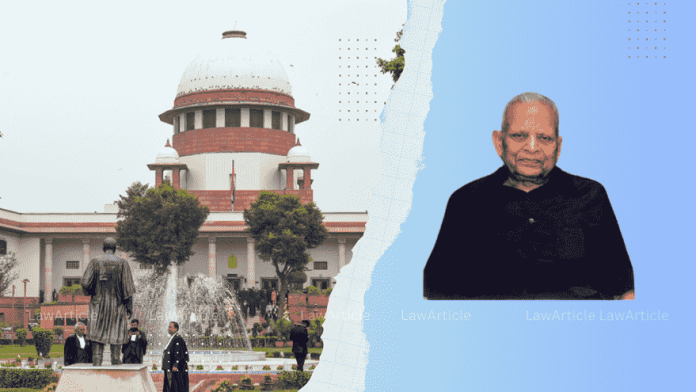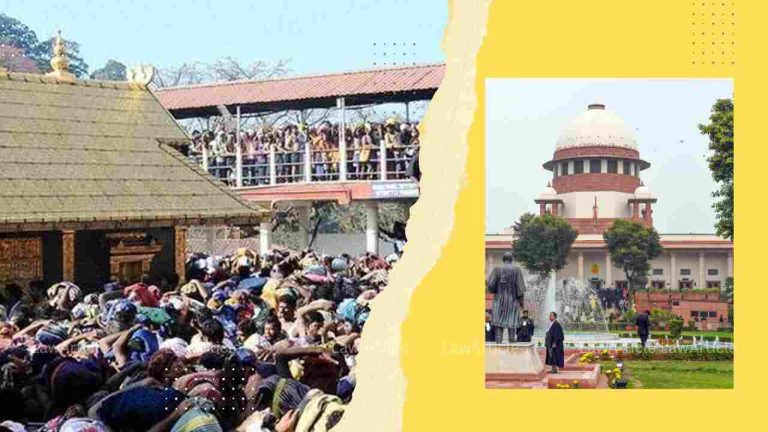S P Gupta vs Union of India 1981
CASE NO: Transfer Case (Civil) 19 of 1981
PETITIONER: S.P. GUPTA
RESPONDENT: UNION OF INDIA & ANR.
DATE OF JUDGMENT: 30/12/1981
BENCH: P.N. BHAGWATI & A.C. GUPTA & S.M. FAZALALI & V.D. TULZAPURKAR & D.A. DESAI
Background of S P Gupta vs Union of India 1981
The case of SP Gupta v Union of India, commonly known as the ‘Judges’ Transfer Case,’ stands as a significant landmark within the ‘Three Judges Cases,’ later popularly referred to as the ‘Four Judges Case’ since 2015. These cases played a pivotal role in establishing a collegium system for the appointment of judges within the Supreme Court and High Courts.
These cases set a crucial precedent, placing emphasis on the principle of independent jurisdiction. This principle ensures that the judiciary is the sole authority responsible for the appointment of judges, free from interference from any other branch of the government.
Mr. SP Gupta, a distinguished figure in the legal profession, has had a long and illustrious career as a pleader in the Allahabad High Court since 1951. He also served as the Advocate General for the State of Uttar Pradesh on two occasions. Mr. Gupta’s influential role in this case was instrumental in shaping the establishment of the collegium system for the appointment of judges in our country.
Brief Facts
In 1981, a number of writ petitions were initiated by legal practitioners in various high courts, challenging a government order related to the non-appointment of two judges and their subsequent transfer. The legal proceedings commenced with the filing of the initial petition in the Bombay High Court, followed by a second petition in the Delhi High Court. These petitions not only contested the government’s order but also raised constitutional concerns regarding the procedure for appointing judges to higher courts.
The central issue in SP Gupta vs Union of India revolved around the appointment of three additional judges to the Supreme Court for a limited term, which was perceived as inconsistent with the provisions outlined in Article 224 of the Constitution. The petitions also sought the conversion of these temporary judicial positions into permanent ones, a step perceived as crucial for safeguarding the independence of the judiciary.
One of the several petitions was submitted by S.P. Gupta, an advocate in the Allahabad High Court at the time, specifically addressing the appointment of Justice Murlidhar, Justice A.N. Verma, and Justice N.N. Mittal as additional judges in the High Court. An advocate from the Ministry of Law and Justice contested the validity of these petitions, contending that the government’s order and the short-term judicial appointments had not resulted in any legal harm to any party.
Issues Raised
The case of SP Gupta vs Union of India centered on the constitutional validity of the Central Government’s directive pertaining to the non-appointment and short-term transfer of judges in High Courts. Additionally, the matter raised inquiries into the disclosure of communications between the Minister of Law, the Chief Justice of the Delhi High Court, and the Chief Justice of India, while also contesting the legitimacy of the petitioners’ standing (locus standi). An equally significant concern related to the autonomy of the judiciary and the procedural framework governing the selection of judges in superior courts.
Judgment of the Court in SP Gupta vs Union of India
In the case of SP Gupta vs Union of India, a majority decision of 5:2 affirmed the validity of not extending the term of an additional judge, specifically Judge S.N. Kumar. This matter was adjudicated by a 7-judge bench of the Supreme Court of India.
Justice Bhagwati advocated for the establishment of a collegium to recommend candidate names to the President for appointing judges in the Supreme Court and High Courts. Conversely, Justice Pathak and Tulzapukar emphasized the importance and supremacy of the Chief Justice of India’s opinion and advice over others.It was unanimously concurred that ‘consultation’ signified comprehensive and effective deliberation, necessitating constitutional functionaries to base their decisions on complete and identical facts.
Explanation of the Judgment
In the case of SP Gupta v Union of India, the Supreme Court dismissed the respondents’ argument regarding the disclosure of correspondence. The Court pronounced that disclosure should only be withheld if it is detrimental to the public interest and is in conflict with public policy. However, if disclosure is essential for the benefit of the public, it must be executed promptly. The Court underscored the principle of an open and accountable government, wherein the government is accountable to the people for its actions.
This principle aligns in the case of S P Gupta vs Union of India 1981 with the right to information safeguarded under the freedom of speech and expression, as delineated in Article 19(1)(a) of the Constitution. In a democracy, transparency and accountability are indispensable, and citizens must have access to information. The sole exception to this right is when the information pertains to national security or its disclosure would be detrimental to the public interest.
Regarding the invocation of Article 74(2) in protecting the advice sought by the respondents, the Court explicated that the correspondence did not fall under the category of advice as defined in the Article. Designating the correspondence as advice by the Chief Justice of India and the Chief Justice of the Delhi High Court did not accord it protection under the Article, particularly as it contained their opinions, which did not qualify as official advice
Addressing the third claim of the respondents in SP Gupta v Union of India, wherein they sought to shield unpublished documents from being treated as evidence under Section 123 of the Indian Evidence Act, 1872, the Court referred to the precedent set in the case of State of UP v. Raj Narain (1975). In the case of S P Gupta vs Union of India 1981, the Court upheld the High Court’s decision to treat unpublished documents as admissible evidence, asserting that the Court holds the authority to assess the potential impact of disclosure on public interest.
In this case S P Gupta vs Union of India 1981, there was an absence of adequate consultation between the government and the pertinent authorities regarding the appointment and transfer of judges. Additionally, these decisions lacked a basis on relevant grounds. The Court’s aim is to strike a balance between fairness, justice, and public interest. In this context, the appointment and transfer of judges were deemed to be in the public interest, warranting the disclosure of the correspondence.
Also Read:
Rights of undertrial prisoners in India
How To Send A Legal Notice In India










